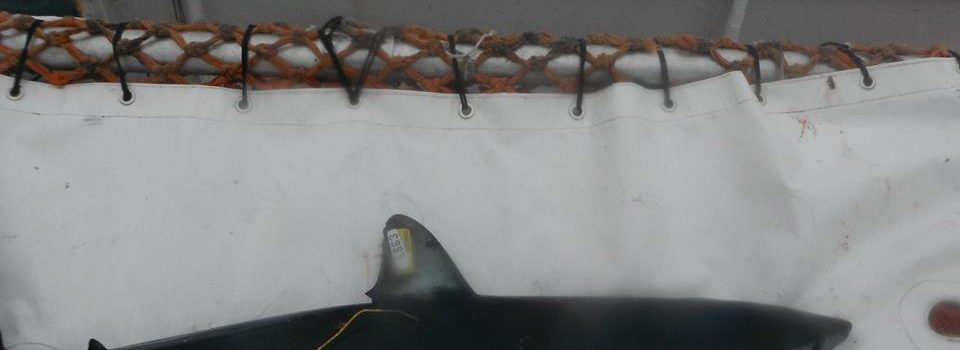Chilean experts carried out satellite tagging sharks in Juan Fernandez archipelago
November 27th, 2015Professionals of the Instituto de Fomento Pesquero and the Universidad Austral scientific cruise will be funded by GEF project Humboldt Chile. They set sail today Friday June 6, from Coquimbo aboard the fishing II Vama. The landfall is scheduled for November 21.
During 15 days professional sweep the Chilean Pacific Ocean in the region of the Juan Fernandez archipelago with the order of mark sharks and mako sharks sardinero and obtain information that will enable them to identify migratory routes they follow and the depths that divers, among other background. The idea is that you mark 11 sharks, some with double device. It will also work with these species because they had more interaction with the fishing gear.
Julio Lamilla, doctor of biological sciences and head of the laboratory of elasmobranch fishes of the Universidad Austral, is the leader in the oceanographic cruise and tells us: “We are an international seminar in Valdivia and our great challenge is to know if the sharks we can handle in locally or joint, it must be remembered that the sharks are highly migratory. I participate in the expedition that the NGO Ocearch took place in Chile in 2014, there was a shark mako framework that we call Paul (by Pablo Neruda) that is still transmitting. Paul was believed that he was going to continue sailing toward the north on the Pacific, but the reaching Arica was returned. She has done as three times the circuit.The novelty of this cruise that soon we will undertake is that brings together a team of professionals from different institutions working with the theme of the marking and that is very polished, which enriches the work, in addition to this opportunity will be marked 11 sharks”
Sebastian Kraft, a marine biologist, referred to the cruise “has a great importance to the Chilean marine science since it is first time that you are working with so many brands, in addition it is essential to understand which is the use of the space of these migratory species, the Juan Fernandez Archipelago is located in open waters and geographical areas are unique in the world for the pristine; therefore, the results of this cruise are important for Chile and the world”.
Edison Garces, researcher of IFOP, which participates in the cruise explained “satellite telemetry applied to sharks gives us the opportunity to perform a single activity of its kind and as a researcher is an enriching experience and dapper crime fighters to study live sharks and understand its ocean behavior, migratory routes and feeding. In addition to the activity of marking are incorporated studies of stable isotopes, which we provide valuable information and integral in the trophic transfer of energy from the complex and wonderful world of predators stops of the Ocean”.
Luis Pizarro, scientific observer of IFOP, added, “I hope I will learn new techniques for marking to be applied to shipments ahead of the highly migratory fishing. At the same time i can contribute with the knowledge and experience gained in the years engaged in the follow-up project to highly migratory species for the success of this cruise”
With respect to the brands that will be used in the sharks Dr. Patricia Zarate of IFOP, added, “for the objectives of this project we will use two different types of satellite transmitters. A type of mark is known as SPOT (Smart Position or Temperature Transmitting Tag). These transmitters require that your antenna has contact with the air to send the information to (the) satellite (s). In practice this means that this mark must be affixed to the shark externally and emit a signal for transmission to the satellite each time that the dorsal fin of the shark comes to the surface of the water. These transmissions are converted to signals of the position where the shark each time that it comes to the surface and then it is possible to create maps with routes travelled during the total period of transmission. The second type of brand or satellite transmitter that we’ll use in this project is called PAT (pop-up archival transmitting Tag). This transmitter is inserted into the musculature of the dorsal part of the shark, close to the first dorsal fin. These marks collect and store information on temperature, depth and light intensity as the animal nothing across the ocean. In contrast to the SPOT, the PAT program for that pops out in a given time (30, 60, 90 days, etc. ), floating toward the surface and through its antenna, begin to send the information stored at (the satellite(s).
To install the transmitters we have to act fast and in a team where each has its specific task to ensure a successful satellite marking. This project is of great importance because it is the first study of marking shark satellite carried out by Chilean researchers in our country, with this information we can expand our knowledge on the behavior and the connectivity of these species in the Pacific Ocean,” explains Patricia Zárate, Phd in zoology from the University of Florida and researcher of IFOP.
